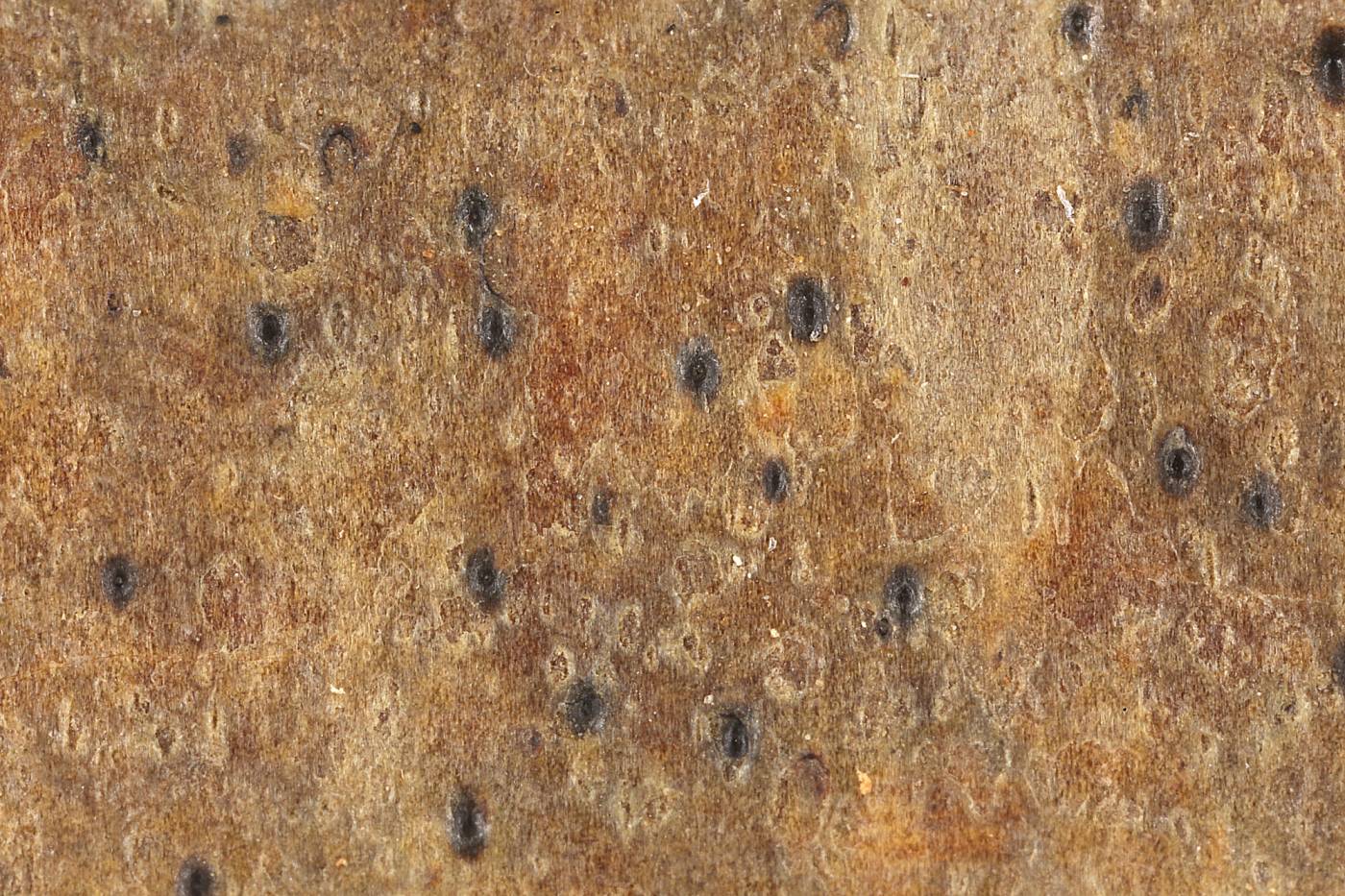A non-lichenized, or only loosely, species characterized by its laterally extending involucrellum and smaller perithecia with smaller spores (10–17 × 4–6 µm). In the field, it rather resembles species of Arthopyrenia s. l. It is mostly recorded on smooth hazel bark, but rarely also on rowan or other deciduous trees. In Europe, the lichen is rare with temperate-boreal distribution and subatlantic tendencies (Wirth et al. 2013). It can, however, be found as far as the northernmost Fennoscandia (Westberg et al. 2021). In the Czech Republic, there are a few records from the first half of the 20th century, mainly by Jindřich Suza (see the Vězda & Liška 1999 catalogue). Recently, it has been recorded near the Czech border; in the Malá sněžná jáma glacial cirque at the polish side of the Krkonoše Mts (Kossowska et al. 2018).
Literature: Wirth V., Hauck M. & Schultz M. (2013): Die Flechten Deutschlands. – Ulmer, Stuttgart. Kossowska M., Fałtynowicz W., Dimos-Zych M., Fałtynowicz H., Patejuk K., Piegdoń A., Buksakowska M. & Jarema P. (2018): Additions to the lichen biota of the Sudety Mountains. I. Records from the Karkonosze Mountains. – Acta Mycologica 53: 1113 [9 p.]. Westberg M., Moberg R., Myrdal M., Nordin A. & Ekman S. (2021): Santesson’s checklist of Fennoscandian lichen-forming and lichenicolous fungi. – Uppsala University: Museum of Evolution.
taxonomic classification:Ascomycota → Eurotiomycetes → Pyrenulales → Pyrenulaceae → Pyrenula
Red List (Liška & Palice 2010):RE – extinct
Red List (Malíček 2023):C1 – critically endangered
Occurrence in the Czech Republic
All records: 4, confirmed 2. One click on a selected square displays particular record(s), including their source(s).
